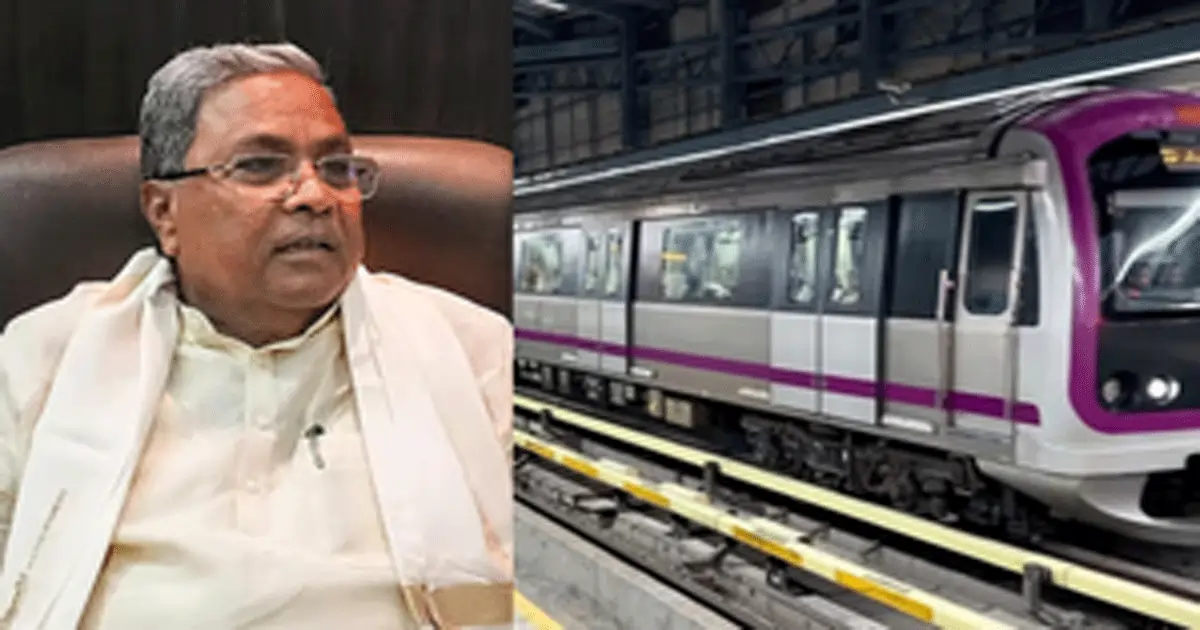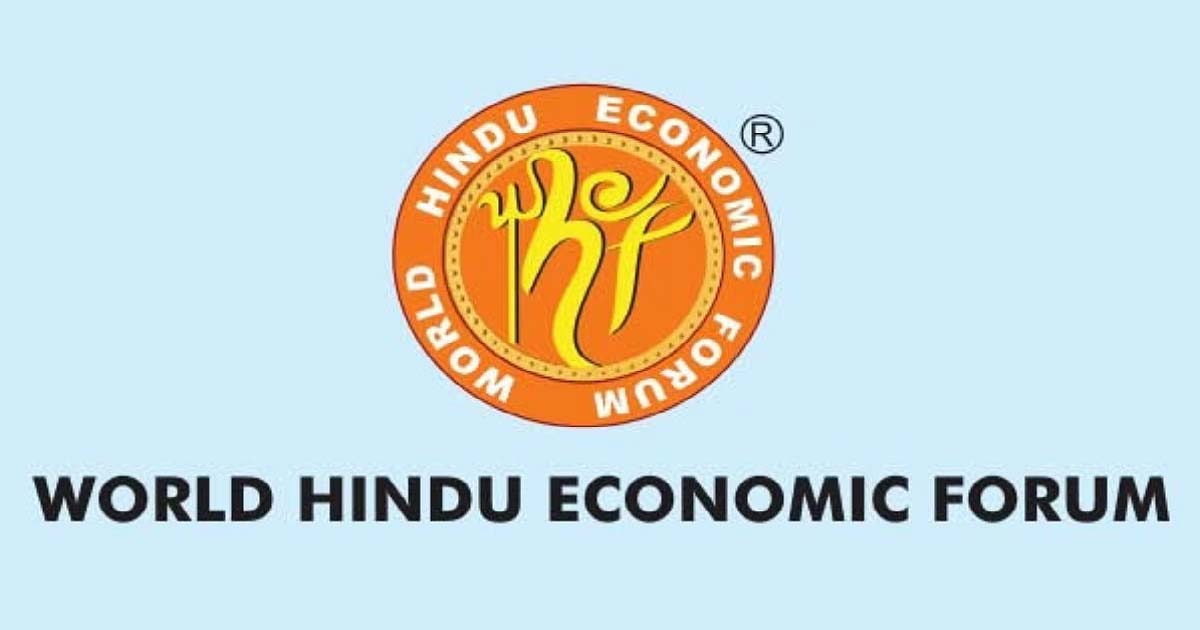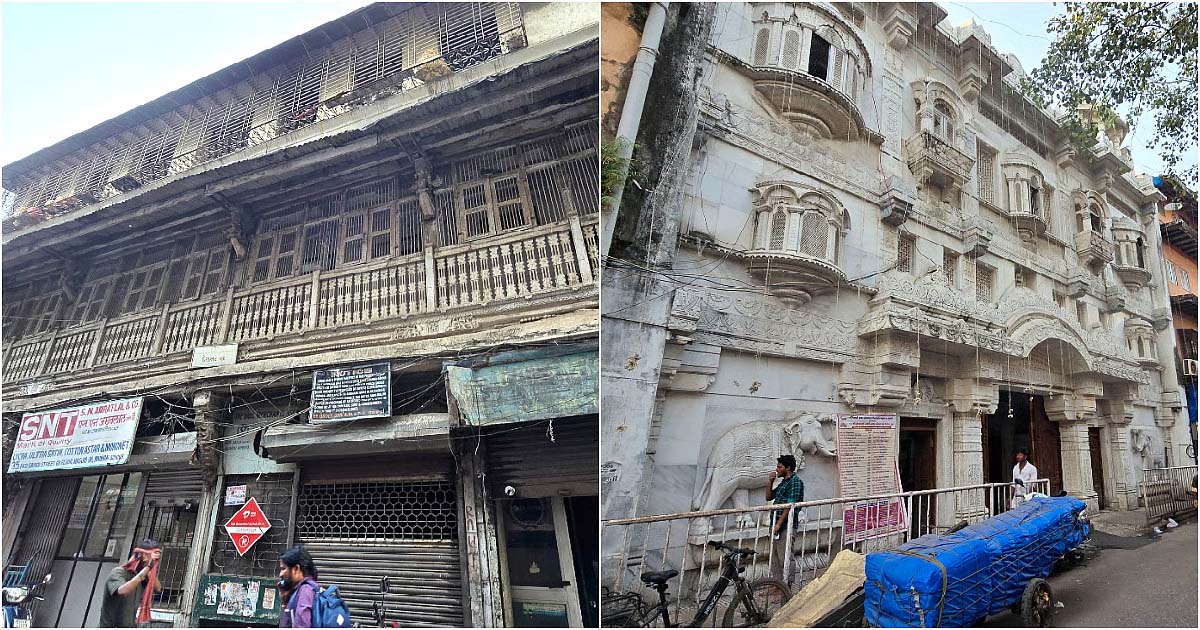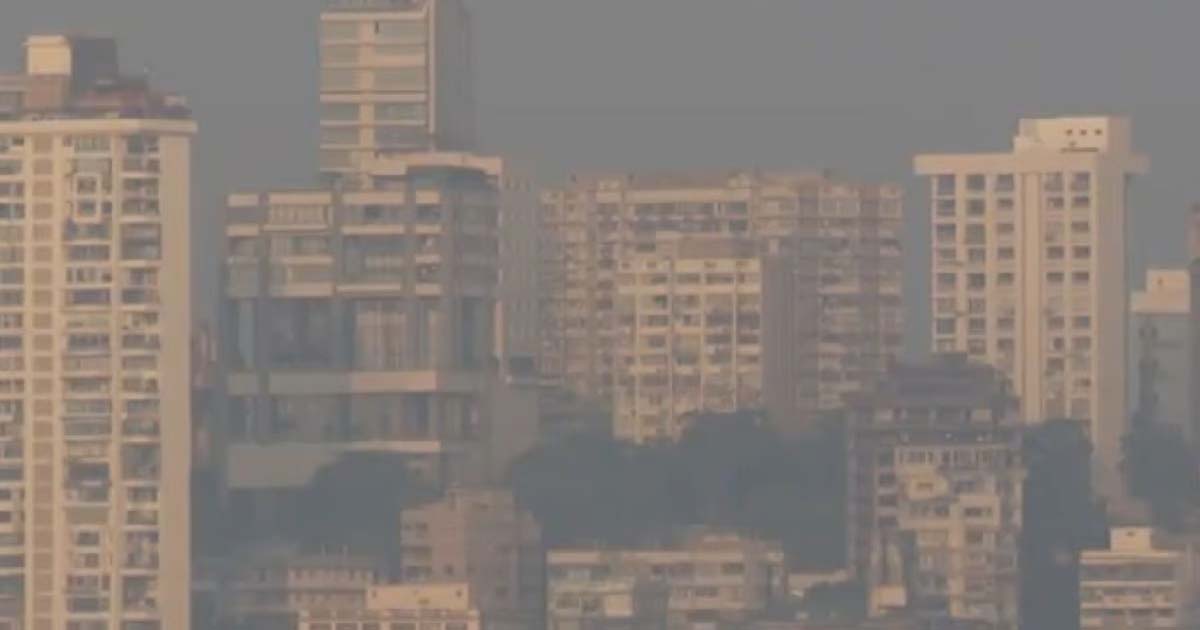National News
Increase abnormal: Siddaramaiah appeals Bangalore Metro Rail Corporation to reduce fares

Bengaluru, Feb 13: Under fire over fare hike in Namma Bengaluru Metro, Karnataka Chief Minister Siddaramaiah appealed to the Bangalore Metro Rail Corporation Limited (BMRCL) on Thursday to reduce fare hike.
The Congress-led Karnataka government has been facing criticism from all corners, including the public over the steep ticket price hike.
Following the price hike, the Namma Metro ridership was reduced by about 80,000 in the city.
CM Siddaramaiah stated, “The way Bangalore Metro Rail Corporation Limited (BMRCL) has implemented the Bengaluru Metro fare revision has led to anomalies, with fares more than doubling in certain sections.”
He further stated, “I have asked the MD of BMRCL to urgently address these issues and reduce fares where increases are abnormal. Commuters’ interests must be safeguarded.”
Last Saturday, the BMRCL announced a revision of Metro ticket prices.
The official statement by the BMRCL stated that the new ticket prices are fixed at Rs 10 for 0 to 2 km distance; Rs 20 for 2 to 4 km; Rs 30 for 4 to 6 km; Rs 40 for 6 to 8 km; Rs 50 for 8 to 10 km; Rs 60 for 10 to 15 km; Rs 70 for 15 to 20 km; Rs 80 for 20 to 25 km; and Rs 90 for 25 to 30 km. For over 30 km, the ticket price will remain Rs 90.
Demanding immediate rollback of the Metro fare hike, a BJP delegation met with the Metro MD M. Maheshwar Rao on Monday, describing it as the steepest Metro fare hike in the country.
Bengaluru MLA Ravi Subramanya criticised the state government for burdening the public with multiple price hikes and increasing Metro fares by 46 per cent. He also insisted that essential facilities should be provided at Metro stations.
“The Metro is meant for the public. Prioritising profits is not the right approach. The project was implemented to ease Bengaluru’s traffic congestion, and even the central government has provided financial aid for it. The fare increase is unfair,” he stated.
Earlier, Siddaramaiah slammed the opposition BJP, charging that the party was misleading the public by spreading distorted information.
“Since 2017, Metro fares have not been revised. Recognising this, BMRCL had written to the central government requesting fare revisions. If the state government had full authority over Metro fares, why would BMRCL write to the Central government instead of addressing the state government directly?” CM Siddaramaiah had stated.
National News
Mumbai: World Hindu Economic Forum 2025 To Be Held On December 19-20, Nitin Gadkari, Piyush Goyal Among Key Speakers

The World Hindu Economic Forum (WHEF) 2025 will be held in Mumbai on December 19 and 20 under the theme of innovation, self-reliance, and prosperity. Confirmed speakers include Union Minister for Road Transport and Highways Nitin Gadkari, Union Minister of Commerce and Industry Piyush Goyal, JSW Group Chairman Sajjan Jindal, and Paytm CEO Vijay Shekhar Sharma.
This year’s forum will bring together leading industrialists, policymakers, entrepreneurs, and global investors from India and abroad to deliberate on strategies for inclusive growth, enterprise promotion, and wealth creation rooted in Hindu civilisational values. Invitations have been extended to the chief ministers of Maharashtra, Madhya Pradesh, Rajasthan, Assam, and Odisha, alongside several prominent business leaders.
The Mumbai forum follows the recently concluded WHEF 2025 Adelaide conference in Australia, held under the theme “Empowering Growth: Prosperity, Innovation and Sustainability”, which saw active participation from Australian leaders, including Minister for Trade and Investment Joe Szakacs, Minister for Tourism and Multicultural Affairs Zoe Bettison, and Senator Andrew McLachlan.
The two-day forum will open on December 19 with an exclusive session for large corporates, followed by the MSME and Entrepreneurial Session on December 20. Highlights include WHEF Launchpad presentations, policy discussions, and extensive networking opportunities. The forum is expected to host over 400 delegates representing sectors such as technology, clean energy, manufacturing, and social innovation.
Founded in 2012, WHEF has held forums in Hong Kong, London, Los Angeles, Bangkok, Chicago, and Adelaide, featuring leading global thinkers. Swami Vigyananand, initiator of WHEF, said, “Our economy is our strength. Through WHEF, we aim to channel the collective talent, knowledge, and enterprise of Hindus globally to create and share surplus wealth, ensuring prosperity for all.”
Rajesh Sharma, chairman of WHEF 2025’s organising committee, said, “WHEF has become a global platform that celebrates enterprise and values-driven growth. WHEF 2025 will spotlight how innovation, ethics, and collaboration can redefine Bharat’s role in the global economy. Our aim is to connect ideas with capital, tradition with technology, and local entrepreneurship with global opportunity.”
National News
Mumbai: Jain Community Moves Bombay HC Against Collector’s Order Upholding Wine Shop’s License Near 1833 Anantnathji Derasar Temple

Mumbai, Nov 19: The long-simmering dispute between the Jain community and a wine shop has escalated to the Bombay High Court. A writ petition has been filed challenging an order issued by the Mumbai city collector, which had previously upheld the operating legality of Masjid Bunder-based Anand Wines, despite allegations that the liquor outlet is situated in violation of mandatory distance norms from the city’s second-oldest Jain temple.
The petition, filed on behalf of the temple trust and the Jain community, centers on the proximity of Anand Wines to Shree Anantnathji Maharaj Derasar, said to be Mumbai’s second oldest Jain temple built in 1833.
Although the dispute has been long standing between the religious institution and the liquor shop, it peaked recently after the Mumbai City collector dismissed the petitioner’s complaint dated March 27, 2024, seeking relocation of the liquor shop.
The complaint read, “The presence of the wine shop in such close proximity to a place of worship is inappropriate and disrespectful. The residents have raised concerns that are impacting the sanctity and tranquility of the area.
Based on this, the state excise department commenced an inquiry and found that the liquor shop was established on August 12, 1999, after being shifted from Bhuleshwar, where it was named as Tipu Wines. It noted that the shop’s license marked it free from restrictions at the time of transfer.
However, the department’s survey revealed that the liquor shop is 88.4 metres away from the temple’s main gate. However, it also recorded that the distance between the temple’s backdoor and the wine shop was only 13 metres, which violated the norms prescribed under Mumbai Foreign Liquor Rules, 1953.
“The licensee does not appear to be free from restrictions as it is within 50 metres of the nearest entrance of a registered religious institution,” read the show cause notice to Anand Wines, seeking reply about why its license should not be cancelled since it is not exempted from the inter-restrictions.
However, the collector dismissed the complaint stating that the distance between the front door and the wine shop is 87.2 metres and therefore it is free from restrictions.
He cited the survey by the state excise department’s deputy superintendent, which said that the back door was found closed on all the three occasions of the official’s visit, hinting that the door is not in use. The order also cited the then collector’s order granting license to Anand Wines, calling it free from restrictions.
The petition challenges the order stating that it considered a report from Brihanmumbai Municipal Corporation, dated April 19, 2025, which recorded that there is no reference of backdoor of the said temple but did not consider the temple CEO Rajendra Khona’s statement to the excise department, dated June 3, 2024, which stated that the temple’s backdoor is being used for religious work. It alleged the order to be bad in law, highlighting the contrary findings in BMC report and state excise department’s records.
It has urged the High Court to quash and set aside the district collector’s order dated July 3, 2025, and cancel the liquor license issued to Anand Wines under the provisions of Maharashtra Prohibition Act, 1949. It also prayed the court to suspend operations of the liquor shop’s license until the final disposal of the petition.
Contacted Sushil Khatanhar, the owner of Anand Wines, who said, “We have been running this business for 25 years and there has never been any objection from any local citizen. The temple’s back gate has not opened in the last 30 years and they have recently started opening it to make it an issue against us. This is a tactic used to harass us so that we give up our shop.”
National News
Mumbai Weather Update: City Wakes Up To Sunny Skies, Yet Haze-filled Morning; Overall AQI In Unhealthy Range At 243

Mumbai: Mumbai awoke on Thursday to an unusually crisp and pleasantly cool morning, offering residents a rare November respite from the city’s typically warm and humid weather. Early risers stepped out to clear skies, gentle winds and a mild chill, conditions that briefly made the city feel closer to winter than its usual tropical climate. Minimum temperatures dipped to below 20°C in the pre-dawn hours, adding to the refreshing start.
The pleasant weather, however, came with a downside. A thin yet persistent layer of smog hung over the skyline, blurring visibility and reminding citizens of the city’s persistent air pollution concerns. While the cool breeze brought comfort, the hazy air muted what could have been an idyllic early winter-like morning.
According to the India Meteorological Department (IMD), clear skies are expected to continue throughout the day, with maximum temperatures reaching up to 34°C. The cool night and early-morning conditions are likely to persist over the next couple of days, although the city’s air quality remains a major worry.
By Thursday morning, Mumbai’s overall Air Quality Index (AQI) had shot up to 243, placing it firmly in the ‘unhealthy’ category. This marks a sharp jump from the moderate levels recorded earlier this month. Several locations reported worryingly high values, with industrial and densely populated pockets emerging as the worst affected.
The Wadala Truck Terminal recorded the day’s highest AQI at 396, categorised as ‘severe’. Deonar (327) and Malad (320) also reported severe pollution levels, while Colaba (317) and Worli (312) were not far behind.
Suburban areas fared slightly better but still remained in problematic ranges: Kandivali East registered 120 and Borivali East 157, both considered ‘poor’. Mankhurd (187), Bhandup West (204) and Jogeshwari (221) reported ‘unhealthy’ readings, highlighting the widespread nature of the pollution surge.
For context, AQI values between 0–50 are classified as ‘good’, 51–100 as ‘moderate’, 101–150 ‘poor’, 151–200 ‘unhealthy’ and anything above 200 as ‘severe’ or ‘hazardous’.
-

 Crime3 years ago
Crime3 years agoClass 10 student jumps to death in Jaipur
-

 Maharashtra1 year ago
Maharashtra1 year agoMumbai Local Train Update: Central Railway’s New Timetable Comes Into Effect; Check Full List Of Revised Timings & Stations
-

 Maharashtra1 year ago
Maharashtra1 year agoMumbai To Go Toll-Free Tonight! Maharashtra Govt Announces Complete Toll Waiver For Light Motor Vehicles At All 5 Entry Points Of City
-

 Maharashtra1 year ago
Maharashtra1 year agoFalse photo of Imtiaz Jaleel’s rally, exposing the fooling conspiracy
-

 National News1 year ago
National News1 year agoMinistry of Railways rolls out Special Drive 4.0 with focus on digitisation, cleanliness, inclusiveness and grievance redressal
-

 Maharashtra1 year ago
Maharashtra1 year agoMaharashtra Elections 2024: Mumbai Metro & BEST Services Extended Till Midnight On Voting Day
-

 National News1 year ago
National News1 year agoJ&K: 4 Jawans Killed, 28 Injured After Bus Carrying BSF Personnel For Poll Duty Falls Into Gorge In Budgam; Terrifying Visuals Surface
-

 Crime1 year ago
Crime1 year agoBaba Siddique Murder: Mumbai Police Unable To Get Lawrence Bishnoi Custody Due To Home Ministry Order, Says Report












